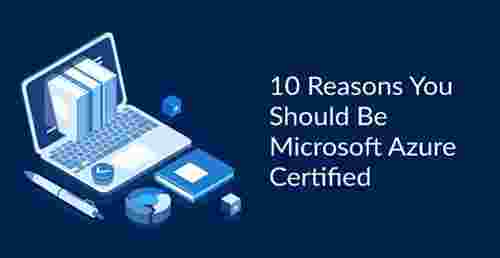
What Is A Cloud?
In the IT world, a cloud is a network of abstracted, pooled, and shared resources. Running workloads within a cloud environment is known as cloud computing. A cloud is a type of PaaS, since another party provides the software and hardware platform.
What Are Cloud Services?
Cloud services is a collective term that includes a number of IT resources that are provided to companies on the internet. They provide access to online cloud resources in an easy and affordable manner. This also prevents companies from installing any internal cloud hardware or infrastructure. Cloud services are professional services that support an organisation in the selection, distribution and management of cloud resources.
While the majority of employees are unaware of their use of cloud services on the job, most use them on a regular basis, whether they are checking their email or collaborating on documents. As the availability of these cloud services increases, corporate applications will increase.
Cloud services are provided by service providers and cloud vendors online.
How Do Cloud Services Work?
While all such services require hardware and software, users don’t need anything more than a network connection and an operating system on their computer to access these cloud services.
Related: Importance of Cloud Computing Certification You Must Know
Understanding Cloud Infrastructure
When provides supply users with a cloud infrastructure, they detach the following computing capabilities from their hardware components.
-
Active memory from RAM chips
-
Processing power from CPU
-
Data storage from hard drives or data centres
-
Graphic processing from GPU
Virtualization and virtual machines are typically used to achieve this abstraction. Upon separation, users receive storage, compute, and networking capabilities over the internet via infrastructure as a service (IaaS). The Internet of Things (IOT) has led to the rise of cloud storage, which stores big data.
What is the delivery method for cloud services?
There are private, public and mixed services available in the market. Companies decide which cloud IT service to go for depending on the professional environment and needs.
In the public cloud, services are made available to multiple customers via the internet. Cloud-based services such as Iaas, PaaS and SaaS are all available through public clouds. In addition to giving employees more capabilities than they would have on their own, public services allow organizations to share resources at scale.
Private cloud services are those that are not available to all corporate subscribers or users. An organization's internal infrastructure is used to provide access to data and apps via the private model. There is no external access to the platform or software since it is used solely by one company. Banks and healthcare providers, which handle highly sensitive data, use private services to increase their virtual resources.
Private cloud solutions are mixed with public services in a hybrid cloud environment. This blend is used when a company wants its staff to have access to public cloud resources for their everyday communications and collaboration but needs to store sensitive data in the private cloud. In many cases, cloud services communicate with one another through proprietary software.
Types of cloud services
These services can be divided into five categories:
-
Software as a Service (SaaS)
-
Infrastructure as a Service (IaaS)
-
Function as a Service (FaaS)
-
Platform as a Service (PaaS)
-
Everything/Anything as a Service (XaaS)
Because they are built on top of each other, they are sometimes called the cloud computing stack. It is easier to accomplish your goals if you know what they are and how they differ.
It is also possible to view these abstraction layers as layers of architecture, where services at a higher layer may be composed of those at a lower layer, such as SaaS providing infrastructure services.
Software as a Service (SaaS)
Services and applications are delivered over the Internet using Software-as-a-Service (SaaS). The software is accessed via the Internet instead of being installed and maintained on computers. This reduces the complexity of managing the software and hardware. Internal computers or data centres do not need to be installed and run applications because it eliminates hardware and software maintenance costs. These providers provide SaaS solutions on a pay-per-use basis.
No downloads or installations are required to run a SaaS application. They can be run directly from the web browser.
Advantages of SaaS
-
SaaS is cost effective. You pay only for what you use.
-
SaaS can be run directly from the web browser. No need to download or install anything.
-
SaaS allows access to your data from anywhere.
-
SaaS automatically installs updates in the background
-
SaaS features and services can be accessed on demand.
Infrastructure as a Service (IaaS)
Computer infrastructure is delivered to companies to support various internal operations. Such infrastructure can include devices, web serves, networking equipment and databases. This type of service is also known as Hardware as a Service. The users pay on a per-user basis with durations ranging from hourly to monthly. IaaS provides companies the security, operating systems, networking and servers to help develop services and applications and deploy databases, development tools, etc.
Advantages of IaaS
-
IaaS eliminates capital expenses
-
Cheaper website hosting than traditional web hosting
-
Better security protocols
-
No management required. All management is handled by IaaS provider.
Function as a Service (FaaS)
This type of cloud computing service provides users a platform to develop, gauge, run and distribute any code or application as a function. Users can develop and update entire codes without worrying about the underlying infrastructure.
This service is an event-driven execution model. The implementation of this service is in a serverless container. When the app is completed, the user with trigger the event to carry out the code, thus activating the servers. Users don’t have to worry about maintaining the servers or even where they are.
With FaaS, you can auto scale up or down depending on your need or demand. You also pay only for the number of executions taking place.
Advantages of FaaS
-
Auto-scaling is possible. The provider needs to be intimated of the demand.
-
Pay only for the events you executed.
-
Upload the entire application at once.
-
Write code for independent functions.
-
Maintenance code is enough.
-
No need to worry about the servers.
-
Any programming language can be used to write the functions.
-
No unnecessary control of the system.
Platform as a Service (PaaS)
In PaaS, developers can develop applications and services over the internet using a platform and environment. Web browsers are used to access PaaS services hosted in the cloud.
Hardware and software are hosted by a PaaS provider on their own infrastructure. Consequently, PaaS allows users to develop or run new applications without installing hardware or software locally. In this way, the hardware is not involved in the development or deployment of the application.
Consumers do not have control over the underlying infrastructure in the cloud, such as the network, server, operating system, or storage, but can control the deployed applications.
Advantages of PaaS
-
Provides other IT services which can be accessed through a web browser.
-
Pay on a per-use basis.
-
Eliminates the need for any local software or hardware.
-
Supports the complete web application cycle.
-
Allows high level programming at a reduced complexity.
-
Improves the effectiveness of the application.
Anything/Everything as a Service (XaaS)
There are now many cloud service providers offering everything as a service, including the above services and some additional ones. Since this is a combined service, all the above stated advantages are applicable here.
Benefits of Cloud Services
Strengthen the scaling ability
Using cloud services prevents companies from buying their own infrastructure and software or hire additional IT staff. By doing this, the business is able to scale up as the workforce grows or the applications are expanded and enhanced as the needs change.
Lower cost
Subscriptions from annual to monthly are available for many cloud services, preventing any purchase local software licenses. By using cloud computing, organizations can access storage, software, storage, databases, etc without investing in or managing any underlying infrastructure.
Increase flexibility
Businesses can procure such services as needed, on-demand. Businesses can simply cancel subscriptions or shut down services when they no longer require the service.
The Future of Cloud Services
Corporate applications of such services will grow as their availability expands. This technology will simplify how organizations deliver mission-critical apps and data to their workforce, regardless of whether they extend existing local infrastructure or transfer completely to the cloud. The cloud is transforming how people work and how businesses operate, from the delivery of the application to virtualisation solutions for desktops.

(1).pngM.jpg)



.pngM.jpg)

COMMENT